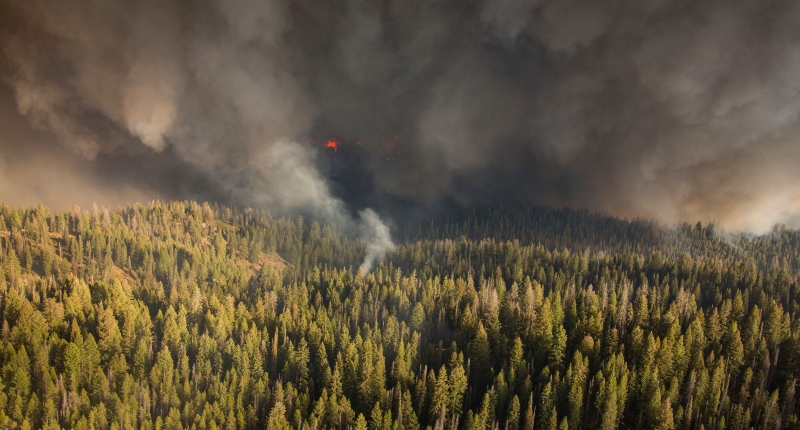Fire Scientists Agree About Wildfire More Than They Realize

Amid a year of record-breaking wildfires in the western United States, a new report brings some good news for fire scientists and managers.
Despite widespread perceptions that fire science is a hotbed of debate over the role and management of feral flames in fire-prone ecosystems, the report shows there is actually a lot common ground within the research community. This finding could help loosen the philosophical gridlock that has sometimes stymied decision-making and could stabilize the foundation for more effective and efficient science-based management.
Called “A Statement of Common Ground Regarding the Role of Wildfire in Forested Landscapes of the Western United States,” the report was led by a team of fire scientists working under the Science for Nature and People Partnership (SNAPP) and focused specifically on fire management in the fire-prone conifer forests of the western United States.
“To me, what’s exciting was that there was so much room for agreement,” said lead author Max Moritz, a wildfire specialist with University of California Cooperative Extension based at UC Santa Barbara.
The team surveyed dozens of leading fire scientists and the scientific literature, altogether representing the full spectrum of perspectives, to identify where the views overlap and diverge. Simplified, at one end of the spectrum are those who argue overcrowded forests are to blame for the most severe fires and must be thinned; those at the other end argue a substantial amount of high-severity fire is natural, making thinning unnecessary and potentially damaging to forest resilience.
Where one lies on that continuum often depends on their disciplinary training – for example, those who study fire behavior may approach management differently than those concerned with biodiversity.
“The report does a good job of clarifying and summarizing evidence for various fire management and forestry practices,” said co-author Christopher Topik, director of The Nature Conservancy’s North America Forest Restoration program. “The common ground helps us understand where our science stands and where there are science-based differences.”
The authors found all scientists surveyed agree that patches of high-severity fire are sometimes natural in western conifer forests, and fire suppression has put the forests of low or mid-range elevations in the most need of restoration.
In terms of fire management, the team discovered there is general agreement that fighting fire with fire is a good, yet underutilized approach to reducing the likelihood of severe fires and restoring fire-prone forests, and there are many ways to do it. In places where people and homes blend with natural areas, called the wildland-urban interface, other intentional treatments may benefit forests and people.
“We identified common ground about protecting human assets from wildfires, and about the positive role that wildfire can play in supporting biodiversity – and that these are not mutually exclusive,” said co-author Dennis Odion, a researcher at UCSB and Southern Oregon University.
Throwing a wrench into management efforts, however, is climate change, another point of agreement among fire scientists. The climate is kindling new questions about where and how to manage forests given the uncertainties that lie ahead.
“We’ve had many large fires and smoke, and more of both are forecast for the future. What we do now for forests and people matters if we are to reap some of the ecological benefits while also protecting people, property, and values,” said co-author Penny Morgan, a professor of fire ecology at the University of Idaho.
The authors hope understanding the common ground can lead to more productive discussions and better coordination among fire scientists, as well as improve monitoring of the effects of fire and forestry practices. In turn, scientists can be better equipped with evidence to help managers find effective solutions for a sustainable coexistence between people and wildfire.
“The next step is turning areas of disagreement into a research agenda for moving forward,” said Moritz.
The team’s research was funded by the Wilburforce Foundation and SNAPP, a partnership between NCEAS, The Nature Conservancy, and Wildlife Conservation Society. Their report also benefitted from reviews by dozens of fire managers.
See a full list of areas of common ground in the research brief, and download the full report and supplementary materials at this link.
